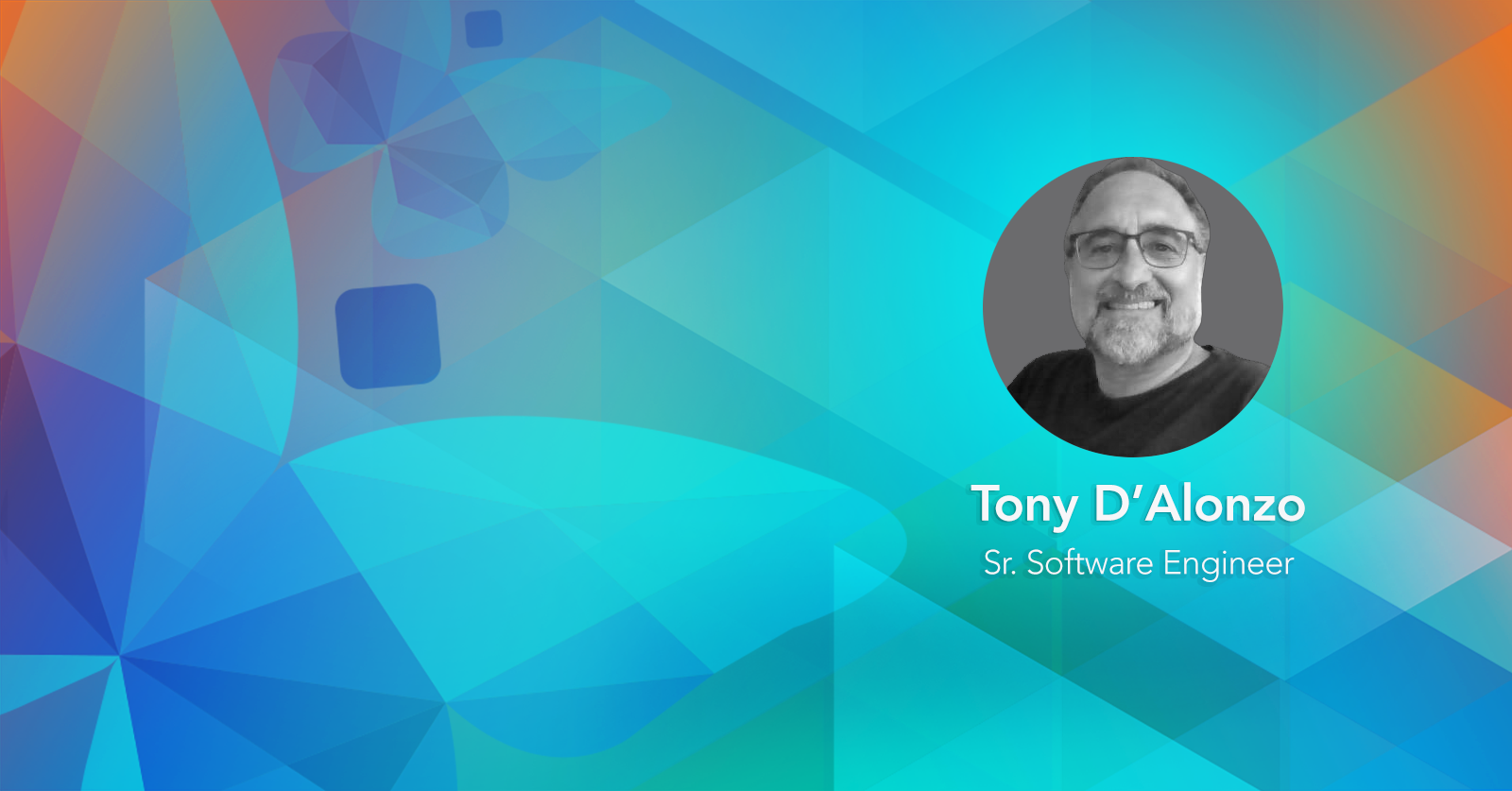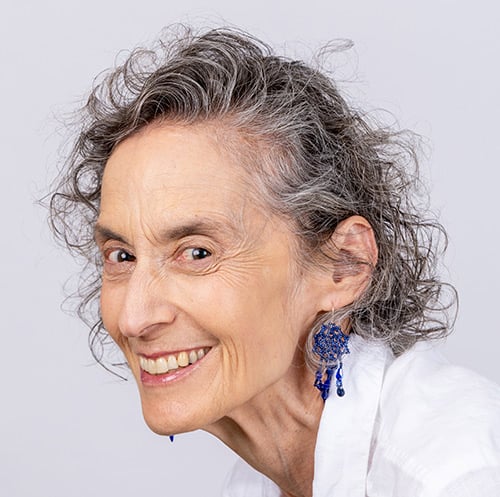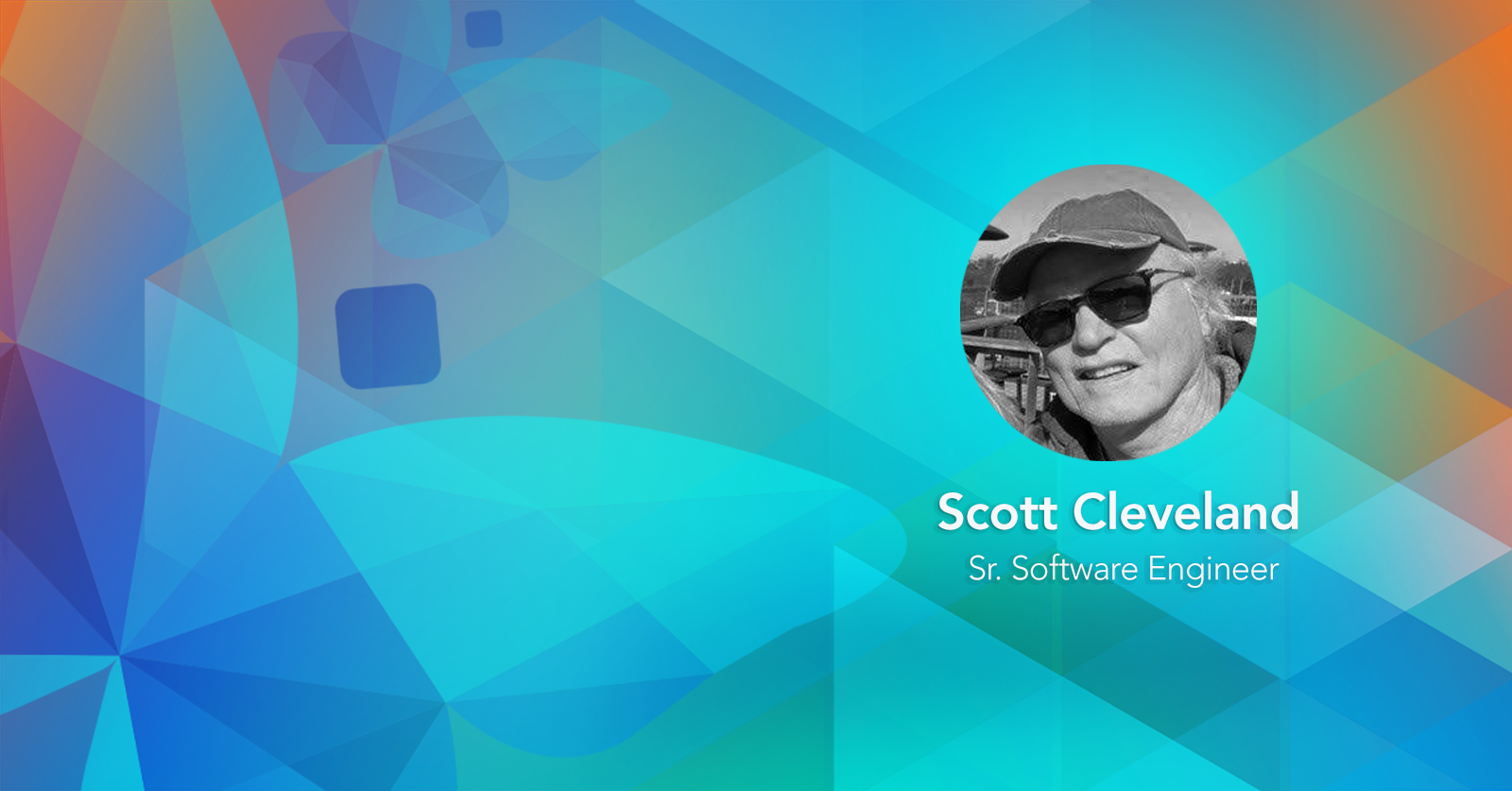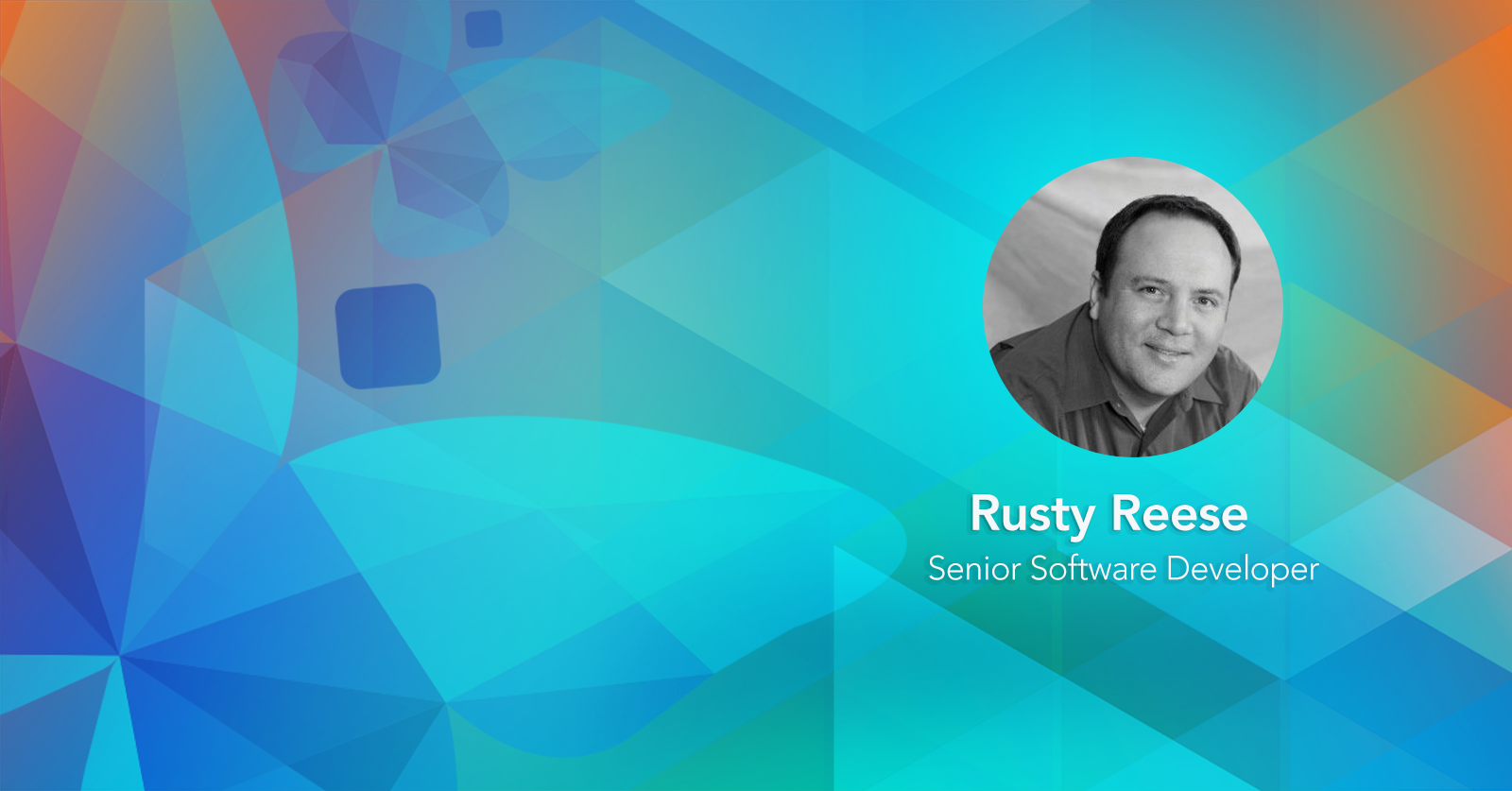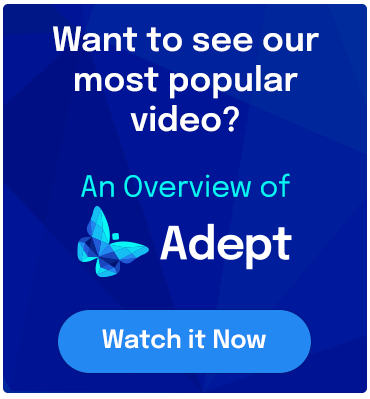“Try not to become a man of success. Rather become a man of value.” -- Albert Einstein
When I asked Tony D ’Alonzo’s longtime friend and code-slinging partner, Bill Stamp what was Tony’s biggest contribution to Synergis, he remarked, “Where do you start?”
“Tony is the original co-developer of Adept,” states Bill. “He brought us the Unix product, the transition from DBF to SQL databases, the transition from C++ to C# data access in our native server, the Xref engine in the current Web Server, and more. Now, he’s key in taking our Web technology to .Net Core and Linux to host as a Cloud application.”
Others agree.
“Tony’s intelligence, knowledge, experience, skill, willingness to help, tenaciousness, work ethic…there are too many outstanding characteristics to list,” adds Paul Ligowski, Software Development Manager, who worked shoulder to shoulder with Tony for 23 years. “His programming skills are wide and deep, and his product knowledge is vast. Tony can be counted on to take on any challenge and get it done.”
“Tony is steadfast and resolute when setting himself to a task or challenge; he doesn’t quit,” says Todd Cummings, Vice President of Research & Development.
It makes sense that of all the Synergis family values, Tony’s favorite is “to build an extraordinary workplace with a strong work ethic.”
After an extended zoom call with Tony, I understand how strong that work ethic is for our Synergis coders. They’re a tightknit band of brothers who work hard, quip freely (“I was in your lousy code --how about putting in a couple more comments”) and rally together to solve hard problems.
“Working at Synergis is not like other companies with toxic work environments where CEOs and management run the programmers ragged, keep them on a short leash, and whip them when they need to,” says Tony. “That’s not at all the Synergis management style.
“What I like most about Synergis are the people I’ve met and become friends with and everything I’ve learned from them. Those same values of decency and honesty apply to the company’s leadership.”
Tony’s value as a hard worker weaves throughout every aspect of his work at Synergis and his family. But this story begins in the mid-1970s.
A Portrait of a Programmer as a Young Man
Tony got his B.A in Biology from LaSalle University in, which led him to a job as research technician at Fox Chase Cancer Center. After four years of Petrie dishes and tissue cultures, Tony realized that academic research wasn’t the career he longed for.
That was in 1985, right in the midst of the “golden age of technological developments.” It was computer programming that really fascinated Tony. “I liked the conceptual abstraction of it,” he explains. “I loved being able to create things that solve a problem by manipulating data and abstract objects.”
He headed back to school at Villanova for a master’s degree in computer science to perfect his trajectory.
In college Tony learned Pascal, “because that’s all they taught,” and quickly added other computer languages to his resume. His first job taught him how to code in Fortran and then he learned “C” when working at Sperry Univac (now Unisys).
When Tony started at Synergis in 1990, he and Bill Stamp were the development team. The rest of the team was a product manager and Todd Cummings, who served first in “national proprietary sales” and second as documentation specialist and product tester.
It was Bill and Tony who stood up the first version of document management software, they called Network FileManager or NFM. Tony ported the DOS version of NFM to UNIX to make it more competitive in corporate engineering departments.
As co-developer of Synergis’ flagship product, no one ever expected Tony to leave.
As Tony explains it today, “I was married and had a two-year-old and a four-year-old. My wife wanted to stop working. I was under a lot of pressure.”
I never knew the details of Tony’ nine-year hiatus from Synergis until now.
“I left Synergis in 1992 to work for a small startup that was doing financial software,” Tony reminisces. “It was there I got really good at C++. Then I worked for a company called Vertex, which created tax software for people collect the proper use and sales tax for their location. That's where I started really getting a line of SQL experience.”
“I left Vertex to follow its VP, who was launching a startup, called Blue Angel Technology. Blue Angel was working on metadata very much like Synergis does– just not specifically for engineering—but the same concept of searching metadata and finding things where you have large inventory of objects that you search, find, and understand. It really helped me develop my C ++ and SQL experience.”
After nine years, Tony admits he was tired of working at startups and felt like he “wasn’t going anywhere.” So, when Bill and Todd reached out to him in 2001 to port the newly renamed product, Adept, from client server code base to SQL, it was a perfect fit.
“When I came back to Synergis, I was a much better programmer than I’d been when I left. I started work on Adept. 4.1, which was still on client server code base. It was great to get it working in SQL. That was a big port and took me a couple of years.”
“Tony has the distinction of having left Synergis to pursue other interests,” Todd recalls. “After which he came back to the team as some of us also imagined he would. I remember our CEO saying, ‘He’s the one who got away, but we got him back!’”
A Day in the Life of a Programmer
I often wonder what programmers do all day. Is writing code like writing an email or a blog post? Is learning a new computer language like learning French or Russian? I know about puzzling words together and learning foreign languages but zero about programming, which is nothing to brag about as someone who works at a software company.
So, I asked. “What’s a day in the life of Tony D’Alonzo?
Tony listed some of his daily “to dos”:
- Working on enhancements to existing products
- Working on new products not yet delivered
- Working on bugs with QA in existing products
- Working with customers and the helpdesk team to troubleshoot and fix their issues with existing products
“Right now, I'm working on the existing product and fixing bugs for Adept 11.0.5 in C++ and when I'm working on the new product using C#.”
I ask Tony if he’d like to show me some of his code. “Sure!” he smiles and shares his screen. He scans dozens of lines of code then stops.
“This is some C#, and it’s part of the new product,” says Tony, pointing to a stack of numbers, indented letters, and symbols, indecipherable to an outsider. Tony lives and breathes these cyphers and his excitement is evident.
“What's cool about this is that it combines the idea of C#, which is the structure of a function that returns a data structure. It has a name; it has parameters.”
He moves his finger and points. “Right here. It also has this block, which is called a LINQ. L-I-N-Q.”
I’m a bit dizzy, but still curious, so I ask, “How many computer languages do you know?”
“Every five years, a programmer has to learn a new language or platform,” says Tony. “One of the biggest things (about a new language) is the flexibility you get with manipulating objects. And then there’s the types of data structures you can create that allow you to manipulate data.
“In the old style, things were a lot more rigid and simplistic. When C came along, you were able to do a lot more in your program. and with C++, it took that even a little further and made it more object oriented. C# gives you even more flexibility. And when you start working in the User Interface with a language like Angular. . . it’s a whole other world. I love that."
“So, it’s even more abstract and fascinating?” I posit.
He nods with his whole body. “For example, when you click on a drop down in the new product, you don’t want to sit and wait for the database. So, I create an object that goes out on its own to the web server. . .and the web server takes that object and goes to the database, cumulates the information, and sends it back. Next, that object tells the dropdown, ‘Hey, I'm ready. I have your stuff.’ Then the drop down hooks up (to the UX) and you see the results. Just that little drop down control did a lot of stuff.”
Whoa. I’m having a satori moment, and I’m grappling for words.
“Tony, you're really an astronaut exploring the realms of inside space,” I murmur. “Do you ever look up and wonder where you’ve been all day?”
He laughs. “Yeah, you could get really kind of lost in it. There's no question. But lost in a good way.”
We both laugh.
With all this heady, brainy work, I wonder how Tony learned the ropes with customer calls.
“I’ve definitely developed a greater ease with customers,” Tony declares. “But the workload with customers is feast or famine. I might work with one company for literally weeks—talking with a DBA or CAD manager—and not do any programming. And then, a lot of times, instead of interacting with the customer directly, I work with our Helpdesk. Just the other day we had an issue and Josh Diehl got me the customer’s database and a backup, along with the names of the files and the problem they were having. I looked at the data, analyzed it and sent him potential solutions.”
He adds, “Customers tell us how responsive we are: ‘You get in there and make sure the problem gets solved.’ We don’t brush them off and just do the minimal work. We’re all hands-on deck--let's get these guys happy.”
Tony’s excitement cracks in the door for another question: “What it’s like to work in the development team?”
“Normally, we'll be responsible for general areas, but there is overlap,” he says, “I’ve been responsible for some of the native stuff and right now for the whole native server. But Bill can get in there and do a lot of stuff and so can Paul, James Johnson, and Chris Koslusky handle the integrations and plugins and are doing a lot of work on the new stuff too. Sean Swope jumped in and helped get the viewer going for 11.0.5.”
“Work on the end user interface, is mainly Sean and Russ Reese. And Juan Matute is like a super genius with the viewer new technologies. He’s amazing.”
Family, Fun and Philosophy
Tony has been married to his second wife, Harriet, for 11 years. A bright, energetic redhead, Harriet is a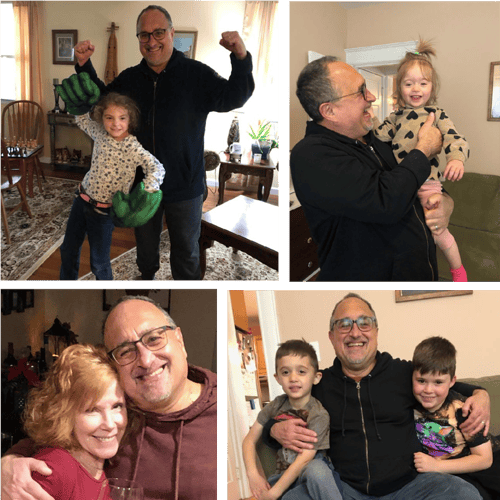 classically trained pianist and elementary school music teacher, who’s the accompanist for all the school plays.
classically trained pianist and elementary school music teacher, who’s the accompanist for all the school plays.
The D ’Alonzo’s blended family includes Tony’s two sons, Rob and Matt and Harriet’s three children Steve, Nick, and Lisa.
Tony’s a doting grandfather to four grandchildren: Matt’s daughter Caitie, seven, and Lisa’s three kiddos Ottavio, seven, Lucio, five and Maddalina, one and a half.
“I love to hang out with my grandkids,” grins Tony, and starts right into a story about accompanying his three young grandkids to see Shrek, The Musical, at Harriet’s school.
“It's a two-hour musical with an intermission. I thought, oh my God, they are going to be really antsy and distracted. It turns out the boys, Ottavio and Lucio, were absolutely mesmerized when between acts the set darkened and all these people came out on stage and changed the scenery. . . they thought that was the most amazing thing. And Caitie came in her full body fox costume and jumps up to applaud with her fox paws.”
Tony’s other passion is reading. He’s got an incredibly eclectic library of philosophy, science, historical fiction, and poetry. He grabs a couple books from the shelf. The first is by Martin Heidegger, a heavyweight 20th century philosopher whose work “An Introduction to Metaphysics” and “Discourse on Thinking”.
“I love his stuff on the question of being and what it is to be,” Tony chimes.
Next he opens “Oxygen” by Nick Lane. “It’s all about the molecule that changed the world and how cells metabolize using oxygen and the evolution of it. I love reading about current trends on the theory of evolution. That’s a big deal for me.”
Tony is close to exhilarated. I’m feeling it, too.
“I just finished ‘The Leopard’” by Giuseppe Di Lampedusa. He wrote it in the 1960s, but it's a major classic about the nobility in Sicily when Garibaldi was transforming the country from bourbon nobility to purely Italian. He near swoons when he mentions another favorite book, “House of Leaves,” by Mark Danielewski,
“It’s about this house that’s internally larger than its external dimensions and it just keeps growing and growing internally until it’s this vast labyrinth of tunnels and things.”
When Tony speaks the names of his most loved poets, I’m near swooning from my own romance with verse.
“I love, love poetry. One of my favorite poets just won the Nobel prize last year, Louis Glück. She’s just amazing, a beautiful American poet. Just incredible. And I've always had a love affair with Pablo de Neruda…oh and I love Wallace Steven.
Tony also plays online chess to decompress. He does rounds with people from around the world like Australia and Russia. I ask how good is his game? He’s quick to answer, “Eh, I’m really mediocre compared with some really brilliant players out there.”
The fact is, Tony is anything but mediocre in the minds of his longtime friends.
“Those of us who know, and love Tony know him to be a quiet and deeply thoughtful man of integrity,” remarks Todd. “He cares deeply for his family and his work; is a proud grandfather; loves poetry; and he’s a fun collaborator on any project as he loves to solve problems. He’s also really fun to watch when he has ‘eureka!’ moments and gets excited about finding ways to solve problems.”
“Tony is always willing to pitch in, and hang in until resolved, whether it’s helping fellow developers or a customer,” adds Bill. “His superpower is his loyalty, empathy, and work ethic.”
And what does Tony want people to know him for?
“Being funny and nice.”
Beyond his great big laugh and witticisms, Tony is a husband, father, and grandfather who “can’t live without the people he loves” and knows, after surviving surgery and radiation for prostate cancer last year, it’s not worth sweating the small stuff.
Perhaps unknowingly, Tony has already fulfilled his intention to “become a man of value” as written in his well-loved quote by Albert Einstein.
And, how fortunate we are to know him.

